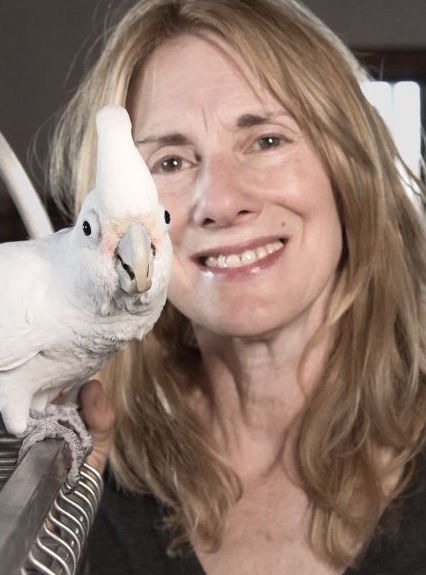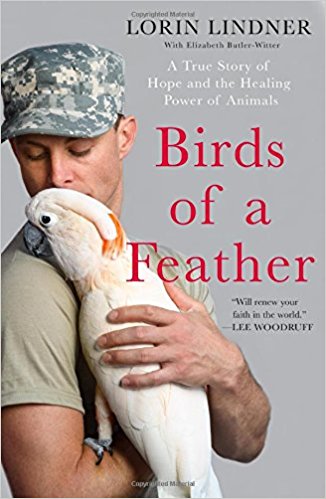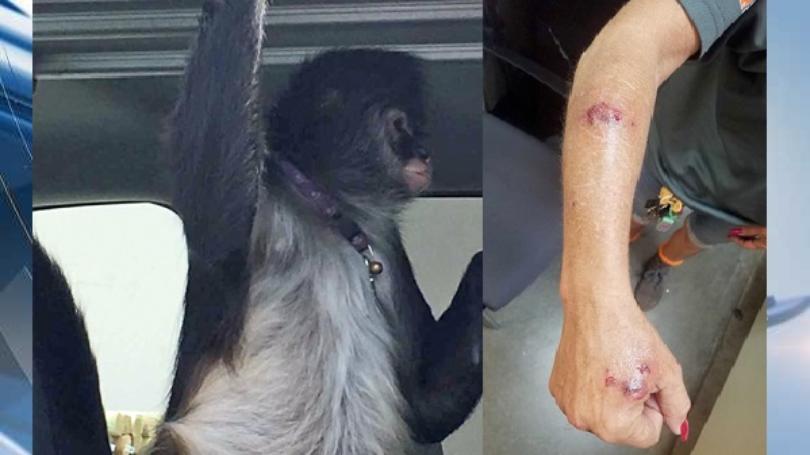Are Americans Too Attached To Their Pets?
Dr. Clay Routledge
 Psychological Scientist Dr. Clay Routledge believes young adults may be bonding with animals at the expense of vital human relationships. While the Animal Radio team may be divided on the health aspects of loving your pet "too much," there is one empirical fact; some of us have trouble prioritizing humans over animals.
Psychological Scientist Dr. Clay Routledge believes young adults may be bonding with animals at the expense of vital human relationships. While the Animal Radio team may be divided on the health aspects of loving your pet "too much," there is one empirical fact; some of us have trouble prioritizing humans over animals.
It's a touchy subject for most animal lovers, and Dr. Routledge, is one of them. In fact, he tells us it is a general rule in his family that he is not allowed to go to places in which there's an opportunity for him to bring home an animal because he undoubtedly will.
The issue, according to Dr. Routledge, really isn't do we love our pets too much but what does it say about the human condition that we are so attached to our pets. To him it's more of what it signals about perhaps deficits in other areas than it says anything about what our pets deserve. However, he can certainly speak about some concerns that he thinks we should all share about the risks to animals when treating them more like they have human qualities than they actually do.
Today, millennials are bringing pets into their lives as their children instead of having human babies. Dr. Routledge explains that there's a lot of debate as to why that is the case. Perhaps its issues ranging from the economic costs associated with children, to people being too busy. But there is some interesting research relating issues like loneliness to pet ownership. There are also trends related to the delaying of marriage and having children. These things seem to correspond with increased pet ownership and not just people having pets, but the anthropomorphism where they treat things or animals that aren't humans, as if they have human cognitive qualities.
Examples of this is where people put their dogs in baby strollers when they aren't injured in any way and when the dog would be better of walking. People also feed their dogs human food that's not necessarily best for their nutritional needs.
Dr. Routledge also tells us this really insane new trend for millennial hipsters to not vaccinate their dogs. This speaks to two crazy beliefs. First, they believe in the false idea that vaccinations cause autism and two, they think that their dogs can even get autism.
These kinds of trends don't necessarily show some kind of bad state that we're in as a social species, but that there are some real risks to animals. There are some real risks to neglect and abuse of treating animals not like animals, but like they're fully part of the human species.
 Where do you draw the line between being over the top with your pet and just being a regular pet owner? Dr. Routledge feels that most pet owners have a perfectly healthy relationship with their pets. However, he thinks people need to be educated about what they can expect from an animal.
Where do you draw the line between being over the top with your pet and just being a regular pet owner? Dr. Routledge feels that most pet owners have a perfectly healthy relationship with their pets. However, he thinks people need to be educated about what they can expect from an animal.
People are less likely across urban, rural and suburban areas of our country, to feel strongly attached to their community. They're less likely to feel like there are people that they can confide in. So he thinks what we're seeing on some level, and of course there's plenty of people that have perfectly healthy relationships with their pets and he's not talking about them here, but at some level there's something going on in which people are so desperate for that human connection that they're elevating their dogs by expecting more from them than they really can give.
Not a week goes by that we don't hear about an airline that has turned away somebody because they can't have their emotional support animal with them. When we use animals for emotional support, is that crossing the line? Dr. Routledge states it's complicated because there is certainly work that suggests that animals are an excellent source of comfort. There's work with elderly people for instance, who might be widowed or living alone or have disability issues that make it hard for them to get out there and living in assisted living facilities, where having a dog can make the difference between feeling depressed or feeling like you've got a purpose. It's certainly the case that pets are comforting and that's fine, but that's a different issue than whether or not they have a scientifically established clinical effectiveness. There just really isn't much evidence showing that you need to take an emotional animal support animal with you in order to be psychologically functional.
So are people replacing human interaction with their pets, and if so, why is that happening? Dr. Routledge feels that one unfortunate component to this loneliness problem or the social disconnection problem is that it kind of perpetuates itself. When people feel lonely or excluded or ostracized, their brain kind of switches to a more defensive position in which they become extremely vigilant about further social loss and they don't want to get hurt again. They don't want to be rejected again. What that can make them do is take fewer social risks. So they're less likely to go out and want to meet people. They're more avoidant. And so if they're directing that social energy trying to meet their social needs with their pets, then that's an easier and safer way to try to meet their belongingness needs than to have to actually go out and deal with human beings.
Libraries are now bringing children and dogs together by letting the children read aloud to the dogs because the dog won't criticize them or tell them that they're reading poorly. That seems to be what we find in all of our animals is that they're nonjudgmental and it's very easy to make them your best friend.
 Dr. Routledge explains that there was some research a couple decades ago in psychology about a concept called contingencies of self worth. The idea was that people's sense of self-esteem or people's sense of self confidence comes in part from the contingencies other people put on them and what have to do to be accepted by others. Interestingly, this was one of the arguments that was made for the positivity of religion. What makes religion so comforting is this sense that God loves you no matter what. Dr. Routledge is not trying to compare pets to God by any means, but you can get that kind of sense that you feel that these animals love you no matter what. There's something very affirming about that when you have to go out in the world and deal with people who may only like you conditionally or only reinforce you conditionally.
Dr. Routledge explains that there was some research a couple decades ago in psychology about a concept called contingencies of self worth. The idea was that people's sense of self-esteem or people's sense of self confidence comes in part from the contingencies other people put on them and what have to do to be accepted by others. Interestingly, this was one of the arguments that was made for the positivity of religion. What makes religion so comforting is this sense that God loves you no matter what. Dr. Routledge is not trying to compare pets to God by any means, but you can get that kind of sense that you feel that these animals love you no matter what. There's something very affirming about that when you have to go out in the world and deal with people who may only like you conditionally or only reinforce you conditionally.
After writing his article, "Are Americans Too Attached To Their Pets?" Dr. Routledge received dozens and dozens of hate emails essentially confirming that people have only been treated horrible by people; you can't trust people; you can't depend on people; and whenever I come home from work, my dog is always happy to see me. This was fascinating to him because so much of it stated that humans are trash, humans are garbage and that he was also garbage. In a way, it just spoke to his point that people don't have a lot of faith in humanity, with poll numbers supporting this. So this kind of reinforcement, which again there's nothing wrong with being happy to see your dog, but the questions we have to ask is, what is that? Is that indicating something that's missing in terms of human relationships?
Visit Website
Parrots Help Veterans with PTSD
Dr. Lorin Lindner, Birds of a Feather
 Dr. Lorin Lindner founded Serenity Park, a unique sanctuary on the grounds of the Los Angeles Veterans Administration Healthcare Center. She noticed that the veterans she treated as a clinical psychologist and the parrots she had taken in as a rescuer quickly formed bonds. Men and women who had been silent in therapy would share their stories and their feelings more easily with animals.
Dr. Lorin Lindner founded Serenity Park, a unique sanctuary on the grounds of the Los Angeles Veterans Administration Healthcare Center. She noticed that the veterans she treated as a clinical psychologist and the parrots she had taken in as a rescuer quickly formed bonds. Men and women who had been silent in therapy would share their stories and their feelings more easily with animals.
Dr. Lorin Lindner tells us that she is owned by more than one bird and never thought about using them for veterans suffering from PTSD (Post-Traumatic Stress Disorder). It all started when she was trying to do group therapy with a menagerie of veterans who were sitting with their arms crossed, not wanting anything to do with her. She had brought one of her birds to the therapy room just really as a convenience because she had nowhere else to put her. Her bird then climbed down to the floor and climbed up one of the veteran's legs and said, "Hewo, I Wuv You!" She explained that that got in a lot better than she did. This was all a happy accident, which led to many more.
Dr. Lindner is a clinical director of a program for homeless veterans and thought that initially the parrots might be a good diversion. Little did she know they were going to be a part of her armamentarium for treating veterans with PTSD. However, it was so successful that she created a sanctuary for veterans and birds, which is the only one in the world.
There are many parrots at Serenity Park, so where did they come from? Unfortunately there is no lack of parrots in need of homes. There's an estimated 30 to 60 million parrots in the United States and are the third most commonly kept companion animal.
 Most of them will outlive their family members so what happens to them when their guardian dies? Family members usually don't want to inherit a bird and deal with the mess and the screaming and the biting. They want to travel or they have young children or they have myriad other reasons why they can't keep a bird for it's long lifetime. Dr. Lindner gets calls every single day. She also receives emails and texts from people who want to relinquish their parrots.
Most of them will outlive their family members so what happens to them when their guardian dies? Family members usually don't want to inherit a bird and deal with the mess and the screaming and the biting. They want to travel or they have young children or they have myriad other reasons why they can't keep a bird for it's long lifetime. Dr. Lindner gets calls every single day. She also receives emails and texts from people who want to relinquish their parrots.
Unfortunately Serenity Park is full at this point and while there are many other sanctuaries in the country, they're close to full as well. Currently Serenity Park has 42 birds. They could build more enclosures, but of course that costs money and it's difficult now with the cost of steel and labor. They do use the veterans to do everything from the animal husbandry to caring for the parrots, to learning the vet tech skills necessary to provide medications when needed. They also use them for the construction of the aviaries that enable the parrots to live a little bit more of a natural life than they would in small cages when their kept in homes.
 Parrots need to have flight, forage and flocking to have a happy life. They also need to be with other members of their own species just like we do. They are social animals and they depend on having other animals of their own kind around them to thrive and to have quality of life. Because of this, it's a very synergistic relationship with the birds helping the veterans and the veterans helping the birds. Dr. Lindner tells us that the birds really do interact with the veterans and they establish deep and lasting relationships because most of the time they mate for life, if humans allow them to. The veterans really form very solid relationships with the birds and that's part of the healing process for the veterans who have been estranged from society after they've returned from military service and they don't feel like they have a place anywhere that they fit in again.
Parrots need to have flight, forage and flocking to have a happy life. They also need to be with other members of their own species just like we do. They are social animals and they depend on having other animals of their own kind around them to thrive and to have quality of life. Because of this, it's a very synergistic relationship with the birds helping the veterans and the veterans helping the birds. Dr. Lindner tells us that the birds really do interact with the veterans and they establish deep and lasting relationships because most of the time they mate for life, if humans allow them to. The veterans really form very solid relationships with the birds and that's part of the healing process for the veterans who have been estranged from society after they've returned from military service and they don't feel like they have a place anywhere that they fit in again.
Being of service to the parrots is really important to the veterans. The parrots also thrive on that kind of attention and really love that interaction. People don't realize how much birds really do indeed enjoy a healthy relationship with humans. Parrots are also are extremely intelligent, and according to Dr. Lindner, equally so to most primates and marine mammals.
Dr. Lindner hopes that people will read her new book, Birds of a Feather, and learn about the plight of parrots first of all, because most people don't even know about adopting a parrot. They know about going to adopt a dog and a cat at the shelter and they know about puppy mills. However, there are also bird mills where conditions are just dreadful for these poor parrots and their young. Readers will also learn about the veterans who are suffering from PTSD and are having a hard time readjusting to civilian life and fitting into society and how the two of them together, these sort of "birds of a feather," are relating and healing each other in ways that are really quite extraordinary.
Visit Website
When Pet Food Is Medicine - Dr. Debbie
 Proper pet nutrition is more than just diet choices for the healthy pet. It's even more important to properly feed the sick pet or those with chronic diseases. What you put in your pet's food bowl can help, or harm, his ability to cope with illness.
Proper pet nutrition is more than just diet choices for the healthy pet. It's even more important to properly feed the sick pet or those with chronic diseases. What you put in your pet's food bowl can help, or harm, his ability to cope with illness.
Peek into your average veterinary office and you'll likely find one or more brands of therapeutic diet foods created to manage pet specific pet health conditions. Veterinarians prescribe therapeutic diets to help pets with kidney disease, diabetes, pancreatitis, weight loss or heart disease. Special digestive diets may focus on hypoallergenic ingredients, fiber content or fat levels. Some diets prevent or dissolve mineralized stones in the urinary bladder. There are even diets to keep the spring in your arthritic dog's step and diets to aid in treating pets with cancer.
The grandfather of veterinary nutrition was Dr. Morris who in 1940 designed a diet to improve longevity of his dog, Buddy, who was a seeing-eye dog battling kidney disease. His efforts led to the introduction to Hill's K/D diet, a favorite diet used today for dogs and cats with kidney dysfunction. Today many more diets and conditions are addressed by companies such as Science Diet, Royal Canin, Purina and Iams.
As a veterinarian I recognize the value that therapeutic diets lend to managing my patients' health. But my strongest testament to their value is as a doggie momma who feeds a therapeutic diet to my own dog, Magnum.
My Labrador Magnum suffers from food allergies with frequent facial skin infections, bad skin odor, scratching and unpleasant gastrointestinal signs with diarrhea and flatulence. After several diet trials with various hypoallergenic diet approaches, he now thrives on a rabbit based therapeutic diet by Royal Canin. His doggie kisses are sweeter smelling now, he's content and he isn't a walking gaseous explosion anymore.
But be prepared to dig deeper in your wallet for therapeutic diets. The research behind these foods will cost the consumer more than average pet foods. Just look at the example of Magnum's food. This diet runs $86 for a 25-pound bag of dry food. This sure isn't cheap. But the investment can pay off in lower medical costs and fewer veterinary visits, justifying the additional cost. In Magnum's case, we are able to avoid continued treatment of skin infections, thereby avoiding medication use and he is spared incessant itching.
 Some pet owners turn to home cooked diets in order to avoid the costs of therapeutic diets. Without guidance and veterinary nutrition analysis, pet owners may risk shortchanging their pet's nutrition. One research study identified that over 90-percent of home prepared diets for sick pets failed to be nutritionally adequate. Quality ingredients aren't cheap and a well-produced home cooked diet often ends up costing far more to prepare than commercially produced therapeutic diets.
Some pet owners turn to home cooked diets in order to avoid the costs of therapeutic diets. Without guidance and veterinary nutrition analysis, pet owners may risk shortchanging their pet's nutrition. One research study identified that over 90-percent of home prepared diets for sick pets failed to be nutritionally adequate. Quality ingredients aren't cheap and a well-produced home cooked diet often ends up costing far more to prepare than commercially produced therapeutic diets.
If your veterinarian recommends nutritional management with a therapeutic diet, discuss all the options with your doctor. Inquire about different brands and sizes of food packages available, as many options are available. Get your money's worth on these diets by following your veterinarian's recommendations. Avoid mixing therapeutic diets with regular foods. This only hinders your pet's results and give you a false sense of saving money by making the food last longer.
As for Magnum, I choose to feed him his therapeutic diet and avoid popping pills into him. That's my gauge of a therapeutic diet success - food that serves like medicine in the doggie bowl, but without the hassles.
Featured veterinarian known as "Dr. Debbie" on national pet radio program, Animal Radio. Ebook author of "Yorkshire Terriers: How to Be Your Dog's Best Friend"; "Pugs: How to Be Your Dog's Best Friend"; "Mini Schnauzers: How to Be Your Dog's Best Friend"; and "Shih Tzu: How to Be Your Dog's Best Friend." Dr. Debbie's books.
Visit Website
Animal Radio News - Lori Brooks
 Filthy Pet Food Production Facility
Filthy Pet Food Production Facility
Mars Company markets canned dog and cat foods under the Pedigree, Cesar, Whiskas, Nutro and IAMS brands and problems over the past two years at their pet food production facility in Columbus, OH, are now becoming public. Food Safety News.com has revealed that the facility was crawling with an infestation of German cockroaches between October 2016 and July of last year. Pet food from the plant also generated consumer complaints about finding hard plastic pieces in the pet food. A recall of the affected foods was issued, but inspections of the facility to check on how they remedied the problem found the company had not completed repairs as promised. During an inspection last July, investigators from the FDA found two more problems: one having to do with how raw ingredients were handled and another citation found the plant had failed to take effective measures against contamination of animal food by pests. That report specifically showed employees at the Mars facility had reported birds, beetles and multiple flies, even maggots in areas where raw ingredients were stored and handled. You would think once inspectors find these problems that companies would be eager to fix the problems and get a clean record again, but that's not always the case. In the report of how Mars dealt with follow up inspections, FDA investigators reported Mars officials refusing to cooperate on three points three during the course of the inspection, including: refusal to permit any pictures to be taken and refusal to provide photocopies of consumer complaints and pest control records. The investigation triggered by that initial recall is now closed.
 Rare Lobster Saved From Death Row
Rare Lobster Saved From Death Row
In some cases a genetic defect can be a great thing but it's usually a bad thing when that leads to an unusually colored animal in the wild, because it makes them stand out and become easy prey for predators. In the case of one Canadian lobster, rare pigmentation was a good thing and led recently to a reprieve from death row. The bright orange crustacean arrived from Nova Scotia as part of a shipment mostly filled with crustaceans of the usual greenish-brown color. Workers who saw it at the store, which sells 200,000 lobsters a year, knew they had a rare specimen and donated it to the New England Aquarium in Boston. Experts at the University of Maine's Lobster Institute said the orange color of that lobster occurs in just one of about every 30 million lobsters.
 Monkey Bites Home Depot Employee
Monkey Bites Home Depot Employee
A pet monkey escaped from its owner's truck and went ape on a Home Depot worker recently in Florida. A domesticated spider monkey named Spanky went wild in the store parking lot after he got loose, then bit a woman who was trying to help capture the creature and get it back to its owner. The woman quietly got the monkey's leash when it crawled up her back where it bit her, twice. When Spanky climbed down off her back, the woman got hold of his leash again and walked him to the front door of the store to look for its owner. When the front sliding glass door of the store opened, the monkey got scared and bit her again on the arm and hand. It was not Spanky's first visit to the store but perhaps it will be the last.
 Oldest Cat Turns 30
Oldest Cat Turns 30
A British cat has been given the title of the oldest cat in the world after celebrating its 30th birthday. The cat, named Rubble, has been with his mom since she got him as a kitten on her 20th birthday in May of 1988. They have been inseparable ever since and Rubble has now matched the age of the last world record holder. The oldest cat ever according to the record books is Creme Puff who was born on August 3, 1967 and lived until August 6, 2005, an amazing 38 years and 3 days.
Canine Influenza Not A Threat To Humans - Yet
In China, three flu viruses have spread from pigs to pet dogs and experts believe these viruses pose a potential risk to humans. Canine influenza viruses are becoming more prevalent, but at this time they are mainly associated with dog shelters due to crowded conditions. However, researchers who are keeping tabs on the viruses say it is probable that in the near future these viruses will also be detected in many household dogs or pets. Canine influenza viruses are not generally transmitted from dogs to humans, so there is no reason to be worried at this moment according to the lead researcher who adds, that if the diversity of dog flu viruses continue to expand and become more prevalent in dogs, they might become a possible source of a flu pandemic due to the large number of dogs and humans living in such close proximity in China.
 Listen to the entire Podcast of this show (#968)
Listen to the entire Podcast of this show (#968)





